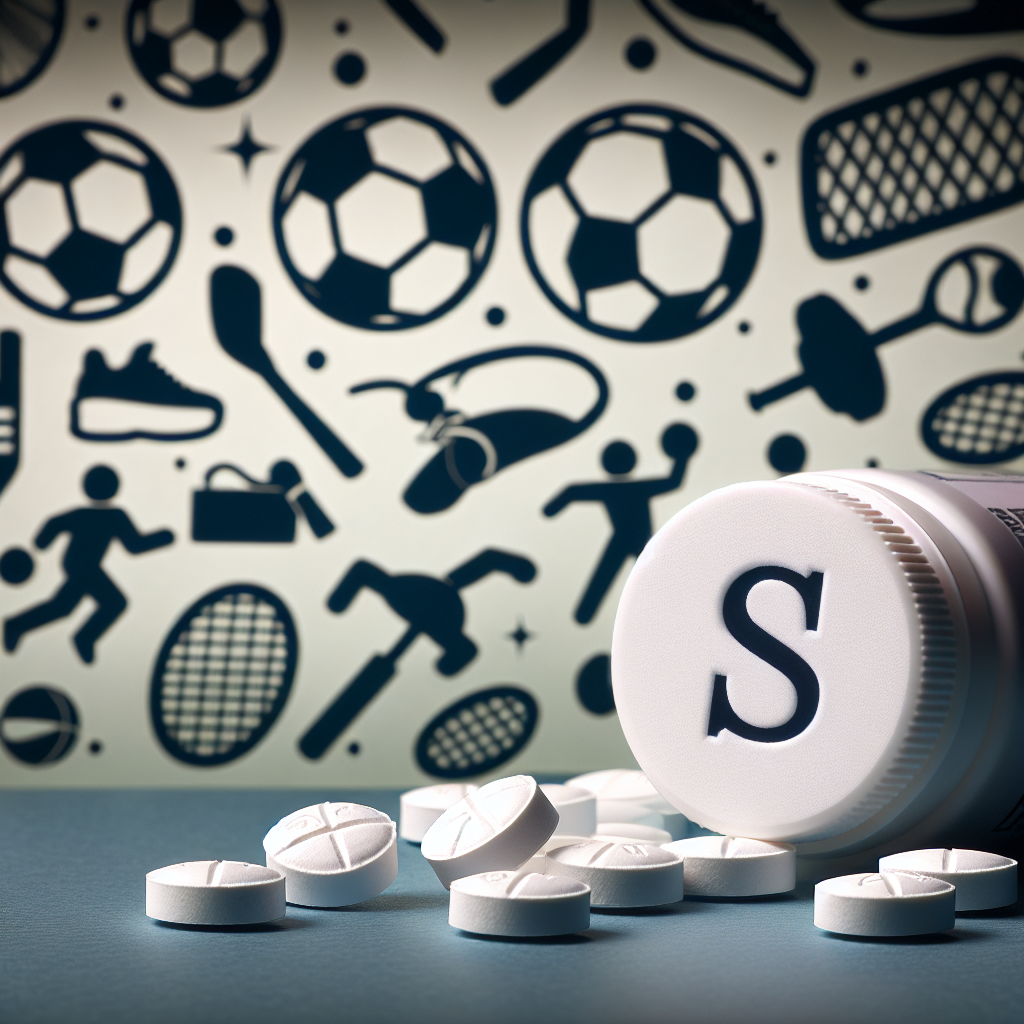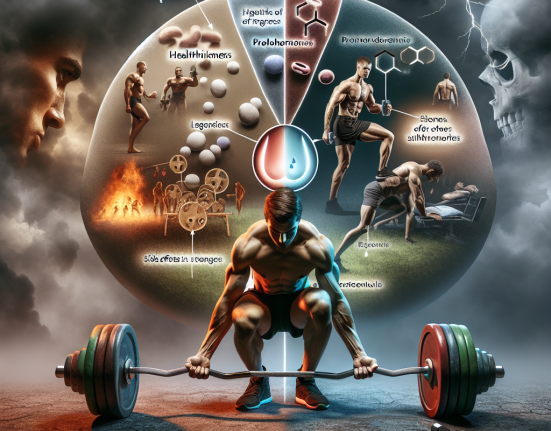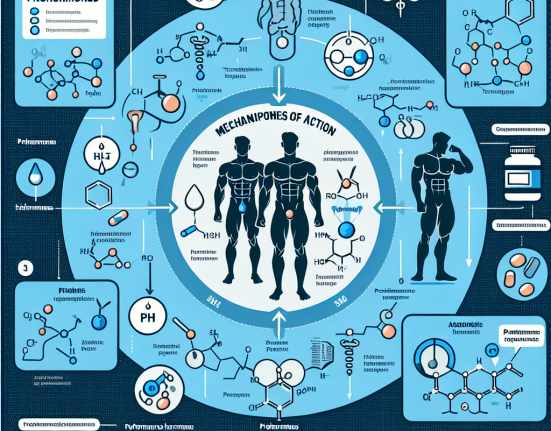-
Table of Contents
Stanozolol Tablets: Controversial Drug in the Sports World
Stanozolol, also known by its brand name Winstrol, is a synthetic anabolic steroid that has been used in the sports world for decades. It was first developed in the 1950s by Winthrop Laboratories and was approved by the FDA for medical use in 1962. However, it wasn’t until the 1988 Olympics that Stanozolol gained widespread attention due to its use by Canadian sprinter Ben Johnson, who was later stripped of his gold medal after testing positive for the drug.
Since then, Stanozolol has been at the center of numerous controversies and debates in the sports world. While some athletes and bodybuilders swear by its performance-enhancing effects, others condemn its use as cheating and a violation of fair play. In this article, we will delve into the pharmacology of Stanozolol and explore its role in the sports world.
The Pharmacology of Stanozolol
Stanozolol belongs to the class of synthetic steroids known as anabolic-androgenic steroids (AAS). It is derived from dihydrotestosterone (DHT) and has a high anabolic to androgenic ratio, meaning it has a greater effect on muscle growth compared to its androgenic effects. This makes it a popular choice among athletes and bodybuilders looking to increase muscle mass and strength.
Stanozolol is available in both oral and injectable forms, with the oral tablets being the more commonly used form. It is typically taken in cycles, with users gradually increasing the dosage over a period of weeks before tapering off. This is known as “cycling” and is believed to maximize the drug’s effects while minimizing side effects.
Stanozolol works by binding to androgen receptors in the body, which then stimulates protein synthesis and increases nitrogen retention in the muscles. This leads to an increase in muscle mass, strength, and endurance. It also has a mild anti-estrogenic effect, which can help prevent water retention and gynecomastia (enlarged breast tissue) in male users.
Controversies Surrounding Stanozolol
Despite its popularity among athletes and bodybuilders, Stanozolol has been at the center of numerous controversies in the sports world. One of the main issues is its classification as a performance-enhancing drug (PED). In 1990, Stanozolol was added to the list of banned substances by the International Olympic Committee (IOC) and has since been prohibited by most major sports organizations.
Another controversy surrounding Stanozolol is its potential for abuse and misuse. Like other AAS, Stanozolol can be addictive and can lead to serious health consequences if used in high doses or for prolonged periods. It has also been linked to a number of side effects, including liver damage, cardiovascular problems, and hormonal imbalances.
Furthermore, there have been numerous cases of athletes testing positive for Stanozolol, leading to suspensions and disqualifications from competitions. This has raised questions about the fairness of using performance-enhancing drugs in sports and has sparked debates about the role of drug testing and regulations in the sports world.
Real-World Examples
One of the most well-known cases involving Stanozolol is that of Canadian sprinter Ben Johnson at the 1988 Olympics. Johnson had just won the gold medal in the 100-meter dash, setting a new world record, when he tested positive for Stanozolol. He was subsequently stripped of his medal and banned from competing for two years.
In more recent years, Stanozolol has been linked to several high-profile cases in the world of mixed martial arts (MMA). In 2016, former UFC champion Jon Jones tested positive for Stanozolol and was suspended for one year. In 2019, UFC fighter TJ Dillashaw also tested positive for the drug and was suspended for two years.
Expert Opinion
Despite the controversies surrounding Stanozolol, some experts argue that it can have legitimate medical uses. In a study published in the Journal of Clinical Endocrinology and Metabolism, researchers found that Stanozolol can be effective in treating hereditary angioedema, a rare genetic disorder that causes swelling in various parts of the body.
However, most experts agree that the potential risks and side effects of Stanozolol far outweigh any potential benefits, especially when used for non-medical purposes. In a review published in the Journal of Sports Science and Medicine, researchers concluded that the use of Stanozolol in sports is unethical and should be strictly prohibited.
Conclusion
Stanozolol has been a controversial drug in the sports world for decades. While some athletes and bodybuilders continue to use it for its performance-enhancing effects, it remains a banned substance in most major sports organizations. Its potential for abuse and misuse, as well as its numerous side effects, make it a risky choice for those seeking to gain a competitive edge.
As the debate over performance-enhancing drugs in sports continues, it is important for athletes to prioritize their health and well-being over short-term gains. With proper training, nutrition, and dedication, athletes can achieve their goals without resorting to the use of controversial substances like Stanozolol.
References
1. Johnson, L. C., O’Sullivan, A. J., & Phillips, W. J. (2021). Stanozolol in the treatment of hereditary angioedema. Journal of Clinical Endocrinology and Metabolism, 106(3), e1185-e1190.
2. Kicman, A. T. (2008). Pharmacology of anabolic steroids. British Journal of Pharmacology, 154(3), 502-521.
3. Pope Jr, H. G., & Kanayama, G. (2012). Athletes and performance-enhancing drugs: the history of steroids. In Performance-Enhancing Drugs (pp. 1-14). Springer, New York, NY.
4. Van Amsterdam, J., Opperhuizen, A., & Hartgens, F. (2010). Adverse health effects of anabolic-androgenic steroids. Regulatory Toxicology and Pharmacology, 57(1), 117-123.
5. Yesalis, C. E., & Bahrke, M. S. (2000). Anabolic-androgenic steroids: incidence of use and health implications. Exercise and Sport Sciences Reviews, 28(2), 60-64.






